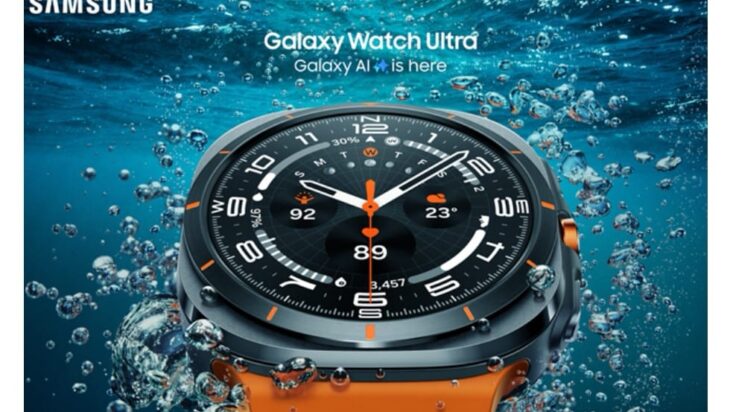Galaxy Watch Shows Strong Correlation With Clinical and Sports Science Equipment in University of Michigan Studies

Galaxy Watch’s fitness tracking features were comprehensively evaluated using elite runners to validate their level of accuracy
Samsung Electronics Co., Ltd. together with the University of Michigan, today announced that the University of Michigan Human Performance & Sport Science Center (HPSSC) — renowned for its integrated and comprehensive sport, exercise, and human performance-related research and education — has validated the high accuracy of Samsung Galaxy Watch’s fitness tracking features.
HPSSC’s Michigan Performance Research Laboratory (MiPR) found a significant correlation between Galaxy Watch and the clinical and sport science reference devices’ measurement of heart rate, sweat loss, VO2 max and body fat percentage measurements, validating the reliability of Galaxy Watch’s monitoring capabilities. This partnership demonstrates how the collaboration between the two organizations makes advanced and precise fitness solutions to more people.
The MiPR studies verified the accuracy of Galaxy Watch’s fitness tracking features by monitoring key metrics from elite runners, including:
• Heart rate: As the most commonly checked health metric during workouts, heart rate measures how hard the heart works during physical activity. Findings show an excellent 90% correlation with electrocardiogram equipment while running, the gold standard in heart rate measurement.
• Sweat loss: Sweat loss estimates the amount of fluid lost during physical activity and helps guide proper hydration after workouts. The study found a 95% correlation for Galaxy Watch in assessing sweat loss over varying distances ranging from 2.5 km to 20 km.
• VO2 max: Understanding how much oxygen the body absorbs during a workout helps individuals assess their fitness levels and set optimal goals and limits. The study demonstrated an 82% correlation, indicating acceptable alignment between Galaxy Watch and clinical-grade diagnostic equipment.
• Body fat percentage: Measuring a person’s body fat percentage allows for a better understanding of physical health and fitness than tracking body weight alone. Galaxy Watch readings showed a 95% correlation with dual-energy X-ray absorptiometry (DEXA) results, the standard diagnostic test for body composition using low-dose X-rays.
“We’re proud to be recognized by the renowned Michigan Performance Research Laboratory — their skilled researchers and expertise in wearable technology give us confidence in the accuracy of the Galaxy Watch’s fitness tracking capabilities,” said Dr. Hon Pak, Senior Vice President and Head of Digital Health Team, Mobile eXperience Business at Samsung Electronics. “We are committed to delivering precise and insightful fitness tracking experiences through strategic partnerships and advanced research.”
“Our partnership with Samsung exemplifies the power of combining industry-leading expertise with pioneering independent research at the academic level,” said Co-PIs Adam Lepley, MiPR director and associate director of HPSSC research. “Together, we can advance scientific discovery and provide information back to consumers that will enhance the use of Samsung’s technology. This synergy underscores the power of uniting academic excellence with industrial innovation, and we are grateful for this collaboration.”
“We are excited to continue our partnership with Samsung to ensure that innovations in wearable technology are accessible and accurate across all segments of the population,” said Kenneth Kozloff, HPSSC co-director. “HPSSC and MiPR are eager to unveil these outstanding outcomes that solidify our commitment to enhancing heart rate and health monitoring and are look forward to future collaborations.”
The following tips can enhance your fitness journey with the Galaxy Watch series, from setting personal goals to post-workout recovery:
• Body composition : Get a comprehensive snapshot of your body, including body fat percentage, body water content and skeletal muscle mass. Set personalized goals based on your current body status and track your progress.
• Personalized heart rate zone: Creating a personalized heart rate zone tailored to your activities allows you to align your health and wellness objectives, and train at optimal intensity levels according to your physical capabilities.
• VO2 max : Gain deeper insight into your fitness levels by analyzing how much oxygen your body uses during physical activity. VO2 max is widely regarded as the best indicator of cardiovascular endurance.
• Sweat loss: After a run, measure your sweat loss and re-hydrate appropriately after each workout based on data for improved recovery.



